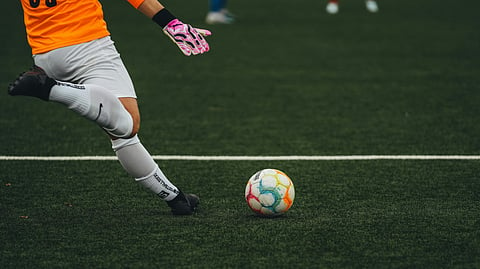The NCAA Student-Athlete Substance Use Study reported that 23% of college athletes used prescription medications, including antibiotics, without a prescription.
How Antibiotics Impact Athletic Performance:
Tendon Injuries: Certain antibiotics, such as fluoroquinolones, are associated with weakening tendons and a higher chance of tendon rupture, which can be especially concerning for athletes. [2]
Reduced Endurance and Motivation: Research, including a study on mice, indicates that antibiotics can adversely affect both endurance and motivation in athletes, likely due to alterations in the gut microbiome. [3]
Gut Microbiome Disruption: Antibiotics eliminate bacteria, including beneficial gut bacteria, which can impair the body’s ability to convert carbohydrates into substances that influence muscle performance and energy. [3]
Fatigue and Muscle Weakness: Some antibiotics may lead to fatigue and decreased muscle strength, which can greatly hinder athletic performance. [4]
Recovery Time: Following the conclusion of antibiotic treatment, athletes may face an extended duration of diminished performance and struggle to return to their pre-antibiotic condition. [5]
Urgent action is necessary
As antibiotic resistance becomes a growing concern, experts are advocating for improved regulations and enhanced education for athletes. They believe that football players may feel pressured to recover quickly, but the reckless use of antibiotics is not a viable solution. Instead, experts emphasize the importance of proper medical supervision and adherence to prescribed treatments to safeguard the health of both athletes and the public.
References:
Samajdar, Shambo S., Shatavisa Mukherjee, Santi R. Dasgupta, Parbati Panda, and Santanu Tripathi. "Antimicrobial Agent Utilization Pattern among Footballers in Eastern India: Classifying Using Access, Watch, and Reserve." BPJ 12, no. 1 (March 20, 2025). Accessed March 12, 2025. https://www.apibpj.com/abstractArticleContentBrowse/BPJ/63/12/1/38919/abstractArticle/Article.
Fayock, K., Voltz, M., Sandella, B., Close, J., Lunser, M., & Okon, J. (2014). Antibiotic precautions in athletes. Sports health, 6(4), 321–325. https://doi.org/10.1177/1941738113506553
McNamara, M.P., et al. "Oral Antibiotics Reduce Voluntary Exercise Behavior in Athletic Mice." Behavioural Processes, 2022. https://doi.org/10.1016/j.beproc.2022.104650.
Puccini V. (2022). Antibiotic Therapy and Athletes: Is the Mitochondrial Dysfunction the Real Achilles' Heel?. Sports (Basel, Switzerland), 10(9), 131. https://doi.org/10.3390/sports10090131
AllCare Health. "Staying Healthy: Antibiotics and Athletes." AllCare Health. Accessed March 12, 2025. https://www.allcarehealth.com/articles-events/articles/staying-healthy-antibiotics-athletes.
(Input from various sources)
(Rehash/Muhammad Faisal/MSM)


